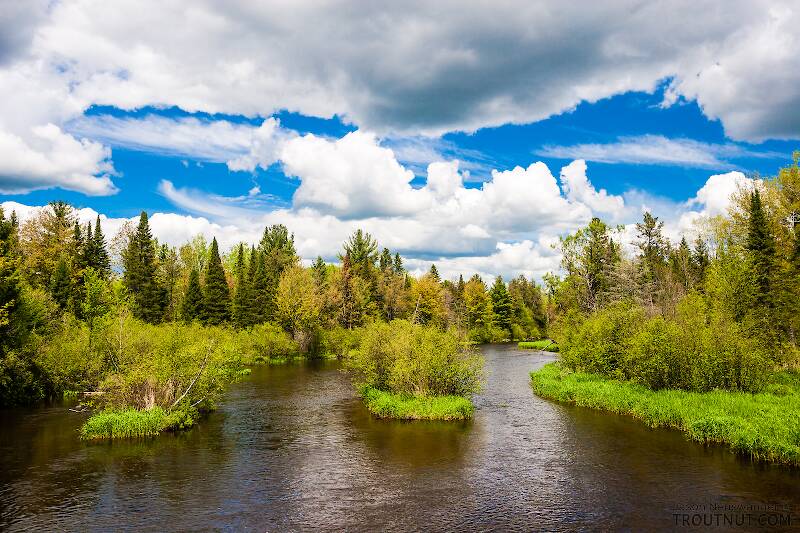
Blue-winged Olives
Baetis
Tiny Baetis mayflies are perhaps the most commonly encountered and imitated by anglers on all American trout streams due to their great abundance, widespread distribution, and trout-friendly emergence habits.

Mayfly Species Anafroptilum minor (Tiny Sulphur Duns)
Species Range
Physical description
Most physical descriptions on Troutnut are direct or slightly edited quotes from the original scientific sources describing or updating the species, although there may be errors in copying them to this website. Such descriptions aren't always definitive, because species often turn out to be more variable than the original describers observed. In some cases, only a single specimen was described! However, they are useful starting points.
Male Spinner
Wing length: 3 mm
Abdominal tergites 2-6 of male imago hyaline; large lateral purplish brown blotches on each.
Head and thorax deep blackish brown. Anterior margin of metanotum tinged with purplish. Pleura and sternum largely dark; slight ruddy tinges anterior to the wing roots. Legs whitish; femora with traces of a ruddy median spot. Wings hyaline, venation pale. First cross vein of the radial sector considerably nearer the base of the wing than the following vein. Abdominal tergites 2-6 hyaline; geminate purplish brown dorsal dashes and large lateral blotches of the same color on each; on tergites 3 and 6 the lateral blotches coalesce dorsally, so that only the anterior portions of these are hyaline. Sternites 2-5 hyaline, each with a brown patch along the lateral margin on each side, and with transverse blackish dashes on the posterior margin, one on each side of the median line. Tergites 7-10 opaque, deep brown tinged with purplish; sternites light creamy brown, opaque; the posterior margin of sternite 9 shaded with purplish. Tails and forceps pale.
This species is distinct from all others thus far described, by reason of its small size and brownish abdominal blotches.
Start a Discussion of Anafroptilum minor
References
- Needham, James G., Jay R. Traver, and Yin-Chi Hsu. 1935. The Biology of Mayflies. Comstock Publishing Company, Inc.
Mayfly Species Anafroptilum minor (Tiny Sulphur Duns)
Species Range
Common Name
Resources
- NatureServe
- Integrated Taxonomic Information System
- Global Biodiversity Information Facility
- Described by McDunnough (1926)


